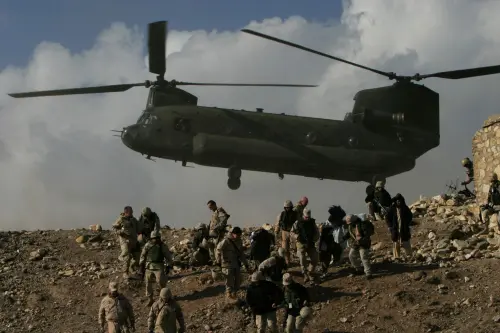Let me begin by expressing my sincere appreciation for being with you here today at this event on the Global Launch of the 2002 Consolidated Inter-Agency Appeals, hosted by the Government of Finland.
The theme of the 2002 CAP “Reaching the Vulnerable”, as well as the themes for the year 2001 CAP “Women and War” and the year 2000 CAP ” Forgotten Emergencies” are a reflection of the continuous need to pay attention to those most affected and most vulnerable during humanitarian emergencies.
Of the 18 Consolidated Appeals presented here today, most include strategies and programmes to prevent or prepare for internal displacement and to assist and provide protection for the internally displaced. While some may think that the focus on internally displaced persons may privilege them, in fact it is merely a recognition of the special vulnerabilities very often associated with the difficult conditions of displacement.
Challenges in reaching the vulnerable are faced on a daily basis by humanitarian workers and agencies around the world. But in the same way, those affected and most vulnerable also face challenges to have access to humanitarian aid. During my country visits in my capacity as Representative of the Secretary-General on Internally Displaced Persons, I have the challenge of advocating for these vulnerable populations with the Government and with relevant actors at the local and national level, as well as with the international community in general.
I have noted that most of the humanitarian crises covered by Appeals in 2002 are countries affected by displacement. In my capacity as Representative of the Secretary-General, I have visited 6 of these countries – Angola, Burundi, Indonesia, Somalia, Sudan and Tajikistan. Most recently in September of this year, I visited Indonesia, one of the countries presenting an appeal that focuses exclusively on assistance and protection for the internally displaced population in the country. In Indonesia humanitarian assistance to sustain the lives of people suffering from internal conflicts is not readily accessible to all in need given the lack of security in some areas. The work of humanitarian workers, in particular those of the non-governmental organizations that put very often their own life at risk, to assist and protect those in need, has been very often threatened. Reaching the vulnerable is not only a question of access to those in need but also about the security of humanitarian workers. In September 2000, we saw the killing in Indonesia of humanitarian workers.
The launch event of the 2001 CAP that I attended in November of last year, in Oslo, focused on the humanitarian situation in Afghanistan and in the Sudan. Even before the recent attacks on Afghanistan, Afghan people were forced into displacement due to the situation in a country that had already been torn asunder by so many years of war.
During the last weeks, the world has observed the deplorable conditions of more than one million displaced persons within Afghanistan who are in urgent need of assistance and protection. Just some weeks ago, jointly with the UN Special Coordinator on Internal Displacement, Mr. Kofi Asomani, I issued a press statement calling on the warring parties to take all necessary steps to ensure safe access by humanitarian organisations to the internally displaced and other vulnerable populations in Afghanistan.
We have also witnessed the courageous efforts of national NGO and United Nations staff assisting those in need within Afghanistan, at a time when all international presence was pulled out due to security concerns. The response of donor States to emergency humanitarian appeals for Afghanistan has been and will continue to be very important due to the complex situation.
As you will see, the 2002 CAP focuses on initiatives to improve humanitarian responses to reach those most in need of assistance while supporting the capacity of people to support them. Issues such as access and vulnerability in crisis-specific situations call for particular attention, including to the vulnerability of women, children, the displaced, the elderly and others. The provision of humanitarian assistance needs also to be based on humanitarian and human rights principles.
Forced displacement can be sometimes a temporary or long-term situation and once stable and safe conditions allow for it, people very often prefer to return to their places of origin. But very often, mostly due to difficult security conditions, displaced people are confronted with the need to either be integrated into new communities or to be resettled. Displaced people become very vulnerable, and nearly always suffer from severe deprivation, hardship and discrimination during displacement, as well as during return, reintegration and resettlement. The trauma of displacement is also an important factor that the humanitarian community needs to pay attention to.
Particularly challenging in all phases of displacement is the need for protection. When I first visited Colombia on a mission in 1994, I met two young courageous women, representatives of an international non-governmental organizations, who were in the field among internally displaced populations, providing protection for the civilians. That experience raised in my mind a number of questions: What does protection mean? What are the normative bases for providing protection? And who has the capacity to protect the vulnerable populations?
In the broader sense of the word, protection must entail the physical security and general welfare of the population. Feeding people and providing them with shelter, medical care, employment opportunities are elements of protection. The provision of such basic needs is usually accepted as part of humanitarian response. The problem arises with respect to the physical security and the fundamental rights of the people concerned. But, even here, if human rights are conceived holistically, both the political and civil rights and economic and social and cultural rights should be included as ingredients of a comprehensive protection framework.
Let me build on the work of my global mandate on internally displaced persons before making some general remarks on the challenges of reaching the vulnerable and ensuring protection for civilians in general. As you undoubtedly know, the crisis of internal displacement, which came to the attention of the international community with the end of the Cold War, affects some 25 to 30 million people in over 40 countries.
These are people who are up rooted from their homes and areas of normal residence as a result of internal conflict, gross and systematic violations of human rights, and other human-made and natural disasters. The main difference between internally displaced persons and refugees is that they remain within the borders of their countries and are therefore assumed to be under the protection of their governments.
Since the conflicts that generate internal displacement often have an aspect of an acute crisis of national identity, both as a cause and a factor in the response to the humanitarian consequences, these people often fall into vacuums of moral responsibility associated with the conflicts. Rather than be seen as citizens meriting protection and assistance from their governments, they are often perceived as part of the enemy, if not the enemy itself, and are therefore susceptible not only to neglect, but also to persecution.
As a result of pressures from a number of NGOs and governments concerned with providing protection and assistance for the internally displaced, the UN Commission on Human Rights became seized with the problem in 1992. The issue was recognized as one of great sensitivity, because internal displacement by definition is internal to the countries concerned and falls under their sovereign rights. The Commission decided to appoint a Representative of the Secretary-General to study the problem and advise the Commission on Human Rights on whether and how to be involved with this internal crisis. I was honoured to have been assigned that task.
Over the years, my mandate has focused on four pillars of activities: the development of a normative framework, which culminated in the Guiding Principles on Internal Displacement; the development of appropriate institutional arrangements for international response; country missions and dialogue with governments and all those concerned with the problem of the internally displaced; and continuing study of various aspects of the problem, both generically and in specific situations.
There is no doubt that the international community has made considerable progress in responding to the crisis of internal displacement. The Guiding Principles have been well-received and are being widely disseminated and applied; appropriate institutional arrangements have been built around the concept of the collaborative approach, involving all pertinent agencies of the UN system and the international community; country missions have continued to provide “on the ground” assessments of situations in different countries and dialogue with governments and all those concerned with the problems of the displaced; and the overall level of awareness of the problem and the need for appropriate response at various levels have significantly been raised. And yet the crisis persists to pose challenges to the international community. There is still a considerable gap between the accepted normative standards and rhetorical commitments on the one hand, and their translation into effective protection and assistance to the affected populations.
As highlighted before, it should be noted that responding to the needs of internally displaced does not and should not imply favouring them over others equally affected by conflicts and related causes. The displaced are of course a particularly vulnerable group with specific needs resulting from their situations as an up rooted population. But there are other vulnerable groups even among the displaced, such as children, women, the elderly and the disabled. While these categories require measures appropriate to their specific needs, all civilian populations affected by conflict require protection and assistance as appropriate.
In providing such protection and assistance within the domestic jurisdiction, sovereignty poses special challenges for governments and the international community. Since the end of the Cold War, human rights and humanitarian concerns have significantly reduced the barriers of the old narrow concept of sovereignty and have permitted international involvement with the plight of populations within their countries. Increasingly, sovereignty is being perceived not as a barricade against international involvement in solidarity with the needy populations, but rather as a positive concept of responsibility for protecting and assisting citizens and all those under state jurisdiction. The challenge now is to give true meaning to this normative concept and ensure its implementation.
With respect to the question of who has the capacity to promote protection and assistance for civilians under domestic jurisdiction, a range of possibilities are discernable. At the lowest level, there is a need to monitor the situation, observe the facts on the ground, collect the relevant information, and bring it to the attention of the pertinent authorities. Then there is a need to invoke the relevant international standards, and engage in various forms of advocacy, building on those standards. Strategies would range from persuasive dialogue, diplomatic intercessions, and at a higher level of intervention, the imposition of sanctions and military actions.
Seen in this light, protection is a collaborative challenge. Every organization with a field presence has an obligation to promote not only assistance but also protection. Some are specifically mandated to provide protection. But even those whose mandates are humanitarian or developmental cannot shy away from promoting protection. No government worthy of the dignity of sovereignty can ask the international community to feed its people and not be interested in their security, their physical safety, and their fundamental human rights.
Let me end by expressing my profound appreciation to the Government of Finland and the international community, for their increased interest and generous attention to the needs for protection and assistance for civilian populations and all those in difficult situations.
The theme of this year’s Global CAP “Reaching the Vulnerable” appropriately places focus on the daunting challenges confronting the international community in their quest for action to effectively address this global crisis.
The Brookings Institution is committed to quality, independence, and impact.
We are supported by a diverse array of funders. In line with our values and policies, each Brookings publication represents the sole views of its author(s).



Commentary
Reaching the Vulnerable
November 1, 2001